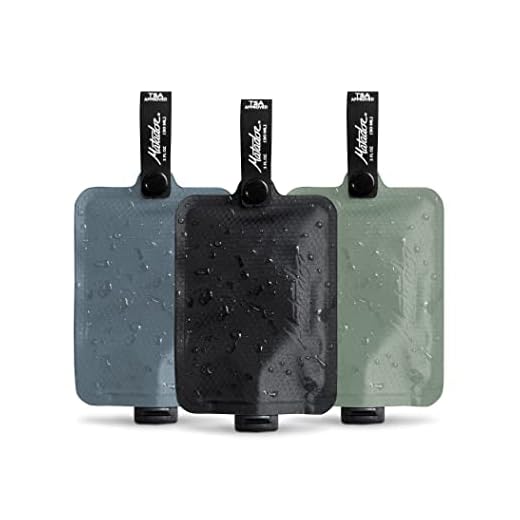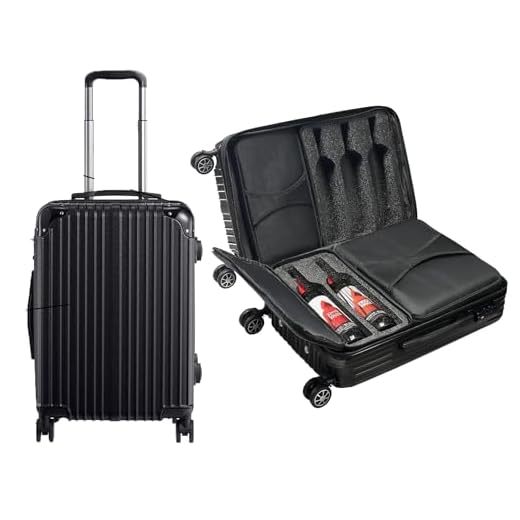



When traveling by air, you have the option to include specific liquid items in your hold baggage. Typically, you can carry beverages with an alcohol content of up to 70%, provided they remain sealed and in their original packaging. This allows you to bring a selection of spirits, wines, or liqueurs without any issues during your trip.
Ensure that each container does not exceed 5 liters for spirits and similarly-sized containers for other drinks. Always check airline policies, as they can vary based on local regulations or the destination country. Consider placing your bottles in protective coverings to minimize the risk of breakage during transit.
For those wishing to bring limited quantities of beverages, it’s beneficial to familiarize yourself with customs limitations at your destination to avoid additional charges or confiscation. Many airports have specific guidelines regarding liquid imports, which can change based on international standards.
Guidelines for Transporting Spirits in Baggage
Alcoholic beverages can be included in your travel gear, subject to specific regulations. Generally, containers should not exceed 5 liters per passenger if they contain an alcohol volume of 24% to 70%. It’s advisable to ensure that these bottles are securely packed to prevent breakage during transit.
Important Limits and Restrictions
Be aware of local laws regarding the importation of spirits at your destination; some countries impose stringent limits or outright bans on certain types. Keep documentation handy, especially if transporting rare or high-value items. Always review carrier-specific policies, as airlines may have unique guidelines for transporting beverages.
Packaging Recommendations
Select robust, padded cases or bubble wrap for fragile items. Wrapping bottles individually provides extra protection. Make sure to label your baggage clearly and check with your airline to confirm any weight restrictions that might apply. If you’re bringing multiple containers, consolidating them into one durable package can streamline the process.
Traveling with beverages requires attention to detail to ensure a hassle-free experience. Proper adherence to guidelines and regulations can lead to a successful journey with your favorite spirits intact.
Understanding Airline Regulations for Alcohol
Limit your spirits to a maximum volume of 5 liters per passenger in the hold. Ensure the alcohol content does not exceed 70% by volume. Secure bottles with protective padding to prevent breakage during transit. Choose sealed containers to comply with safety standards.
Different airlines may have specific stipulations regarding the transportation of beverages, so verify with the carrier prior to travel. Browse the airline’s website or contact customer support for precise information.
Be mindful of the customs regulations of your destination. Certain countries impose restrictions on the quantity or types of beverages allowed. Check local laws to avoid potential confiscation or fines upon arrival.
Keep in mind that your destination may also enforce age restrictions on alcohol imports. Review age regulations to ensure compliance and have identification available if required.
When traveling between international borders, familiarize yourself with duty-free allowances to minimize complications. Excess over the specified limits could incur additional tariffs or costs.
Types of Alcohol Permitted in Checked Luggage
Understand the specific categories of beverages that travelers may include in their hold baggage:
1. Spirits
Liquor with a higher alcohol content, such as vodka, whiskey, rum, and gin, is permissible. Make sure the volume does not exceed 5 liters per person. Each bottle should also be sealed appropriately to minimize leakage.
2. Wine
Wines are allowed with a limit of 5 liters per passenger. It is recommended to use cushioned packaging to prevent breakage. Be aware of the alcohol percentage, as some airlines may have restrictions based on local regulations.
3. Beer
- Bottled and canned varieties are accepted.
- Adhere to a weight limit of 5 liters per person, similar to other spirits.
4. Fortified Wines and Liqueurs
Pressurized or fortified drinks such as port or vermouth follow the same limits applicable to wines and spirits. Check if any special packaging is needed to prevent spoilage during transit.
5. Homemade Beverages
Homemade drinks are tricky. Regulations may differ significantly between airlines and destinations. It’s crucial to be informed about both the origin and destination rules regarding personal concoctions.
Travelers should ensure compliance with individual airline policies and destination country regulations to avoid any complications. Always confirm specific limitations before traveling to ensure a seamless experience.
How to Properly Pack Alcohol for Air Travel
To ensure safe transport of beverages during your flight, follow these specific guidelines:
- Use Protective Packaging: Wrap each bottle in bubble wrap or clothing. Consider placing them in individual padded bags designed for bottles.
- Select the Right Containers: Choose bottles with at least 375ml but not exceeding 1.5 liters per container for optimal compliance.
- Seal Bottles Securely: Ensure that caps are tightly secured. Use tape if necessary to prevent leaks.
- Use a Durable Suitcase: Invest in robust travel gear, such as those with hard shells, to prevent breakage. Consider adding best luggage travel bands for added security.
- Check Weight Limits: Be mindful of total weight allowances to avoid additional fees. Bottled beverages can add significant weight.
- Labeled Containers: Clearly label your items to make identification easier if your bag is inspected by airport security.
- Avoid Overpacking: Leave space in your suitcase to reduce pressure on items. Overstuffed bags may result in breakage.
Once you’ve adhered to these guidelines, double-check the regulations specific to your airline, as they may vary. This ensures a smooth experience while you travel with your favorite drinks.
For optimal outdoor enjoyment after your travel, consider finding the best umbrella for stone table to protect your beverages and yourself while relaxing.
Avoiding Damage: Choosing the Right Containers
Select sturdy, well-padded containers specifically designed for transporting beverages. Seek out options made of materials like reinforced glass or sturdy plastics with a secure seal. Consider investing in specialized carriers or travel bottles intended for liquids that protect against impact.
Recommended Container Types
Focus on the following types:
| Container Type | Advantages | Disadvantages |
|---|---|---|
| Glass Bottles | High-quality, aesthetically pleasing | Fragile; prone to shattering |
| Plastic Bottles | Lightweight, less likely to break | May not provide the same quality perception |
| Insulated Carriers | Temperature control, enhanced protection | Can be bulkier |
| Bubble Wrap/ Padding | Extra cushioning, lightweight | Requires careful packing |
When selecting containers, prioritize those that minimize movement and absorb shocks. Adding padding between each item within the container reduces the risk of breakage. For any high-value items, consider additional insurance coverage. Also, keep in mind the best pressure washer for porcelain tiles can be an inspiring reference when looking for durable products.
Quantity Limits for Spirits in Baggage
Airlines enforce maximum quantities for beverages transported in the hold. Generally, passengers may carry up to five liters of spirits with an alcohol content exceeding 24% per individual. For those containing between 24% and 70%, a standard allowance applies, while drinks under 24% do not usually count toward restrictions.
Country-Specific Regulations
Be mindful of the destination’s customs limits. Many countries impose their own restrictions on the importation of spirits. For example, the UK permits travelers to bring in up to 1 liter of spirits duty-free, while other nations may allow more or less depending on local legislation.
Age Restrictions
All individuals must meet the legal age requirements specific to their destination. Airlines may ask for proof of age at check-in or upon arrival.
Verify regulations ahead of your trip, as failure to comply may result in confiscation at security checkpoints or customs. Always confirm specifics with your airline for the most accurate information.
Customs Regulations When Traveling with Alcohol
Familiarize yourself with the customs rules at your destination. Many countries impose limits on the amount of spirits you can bring without incurring duties. Typically, exemptions range from 1 to 3 liters for personal use, but checking local regulations is necessary.
Declare any quantities above the duty-free limits upon arrival. Failing to do so may lead to confiscation or fines. Some nations, such as Australia and New Zealand, have stringent restrictions on alcohol imports, including specific types that may be banned entirely.
For international flights, customs regulations will often vary between transit points. Prepare to adhere not only to the rules of your final destination but also to those of any countries where you may have connecting flights.
Travelers should also check the applicable age restrictions for importing liquor. Some places set a minimum age for bringing in alcohol, and this can differ based on whether the arrival is from another domestic region or internationally.
Certificates of authenticity or proof of purchase may be required for premium items, especially those over certain monetary value thresholds. Keep receipts handy to avoid complications.
Lastly, consider duties and taxes that may apply, which can significantly increase the cost of what you bring along. Always calculate potential expenses ahead of time to ensure a smooth entry process.







